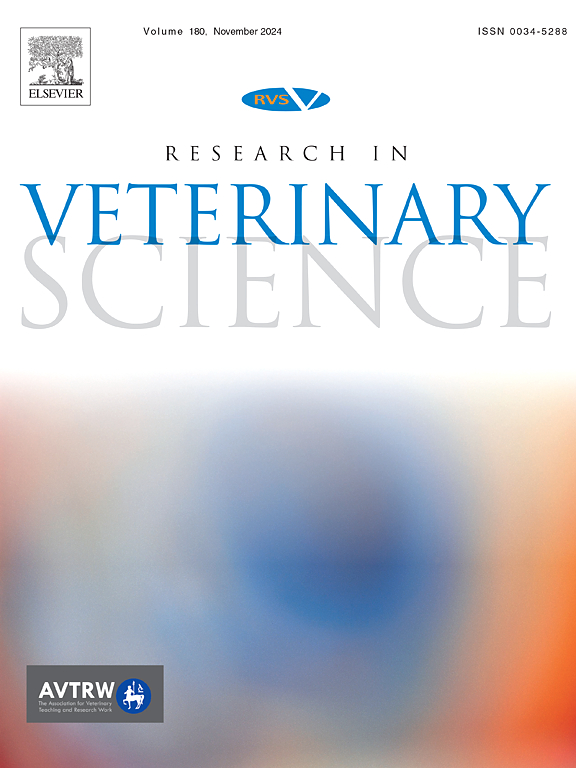Comparative analysis of chromatin accessibility in porcine oocytes from follicles of different sizes
IF 2.2
3区 农林科学
Q1 VETERINARY SCIENCES
引用次数: 0
Abstract
Chromatin accessibility and transcription levels during oocyte growth are important for oocyte maturation and subsequent development. However, chromatin accessibility changes in porcine oocytes during growth are unclear. The present study demonstrated that porcine oocytes derived from large follicles (LFO) exhibited higher developmental capacity than those derived from small follicles (SFO). Assay for transposase-accessible chromatin using sequencing (ATAC-seq) analysis identified 1117 and 1694 uniquely accessible chromatin peaks in LFO and SFO, respectively. Motif analysis of differential peaks revealed the top 10 significantly enriched transcription factor (TF)-binding motifs in LFO versus SFO, with only one increased peak (Spi1 binding site) and nine decreased peaks (NFYA, ATOH1, ZNF549, Foxn1, HAND2, THRB, NHLH2, FoxP1, and FoxP2 binding sites). Gene Ontology (GO) and Kyoto Encyclopedia of Genes and Genomes (KEGG) analysis identified key processes in the regulation of oocyte growth and maturation. Integration of ATAC-seq and RNA sequencing data revealed the top 10 hub genes involved in chromatin remodeling (MYSM1 and EZH2), histone modification (MYSM1, RNF2, USP1, EZH2, and MIER1), and transcription regulation (MYSM1, ASXL3, and MIER1), as well as those involved in metabolic processes and signal transduction (DOCK7, FGGY, DTL, and DNAJC6). All these genes exhibited increased expression levels in LFO versus SFO. In conclusion, the study demonstrated the dynamic nature of chromatin accessibility during porcine oocyte growth and revealed the TFs and genes closely associated with oocyte growth and maturation. These findings provide new insight into porcine oocyte growth and offer a potential strategy to enhance the in vitro developmental ability of SFO.
求助全文
约1分钟内获得全文
求助全文
来源期刊

Research in veterinary science
农林科学-兽医学
CiteScore
4.40
自引率
4.20%
发文量
312
审稿时长
75 days
期刊介绍:
Research in Veterinary Science is an International multi-disciplinary journal publishing original articles, reviews and short communications of a high scientific and ethical standard in all aspects of veterinary and biomedical research.
The primary aim of the journal is to inform veterinary and biomedical scientists of significant advances in veterinary and related research through prompt publication and dissemination. Secondly, the journal aims to provide a general multi-disciplinary forum for discussion and debate of news and issues concerning veterinary science. Thirdly, to promote the dissemination of knowledge to a broader range of professions, globally.
High quality papers on all species of animals are considered, particularly those considered to be of high scientific importance and originality, and with interdisciplinary interest. The journal encourages papers providing results that have clear implications for understanding disease pathogenesis and for the development of control measures or treatments, as well as those dealing with a comparative biomedical approach, which represents a substantial improvement to animal and human health.
Studies without a robust scientific hypothesis or that are preliminary, or of weak originality, as well as negative results, are not appropriate for the journal. Furthermore, observational approaches, case studies or field reports lacking an advancement in general knowledge do not fall within the scope of the journal.
 求助内容:
求助内容: 应助结果提醒方式:
应助结果提醒方式:


